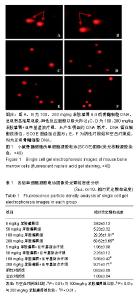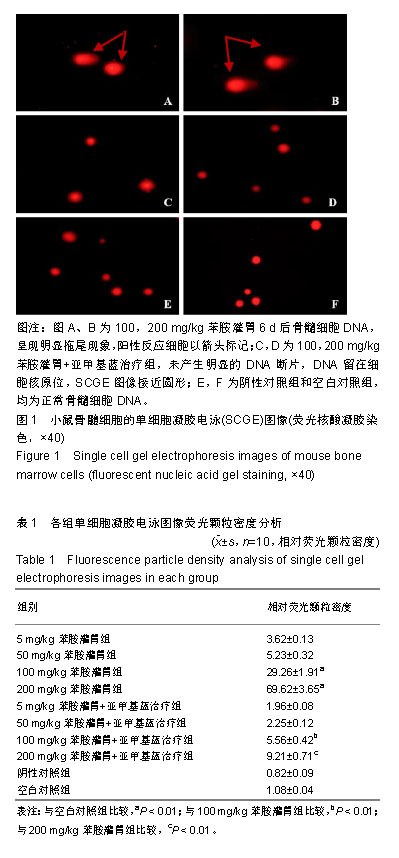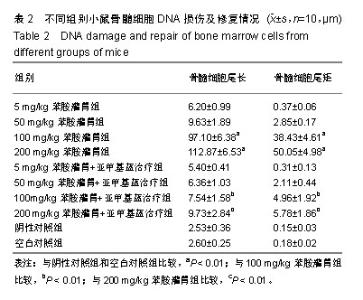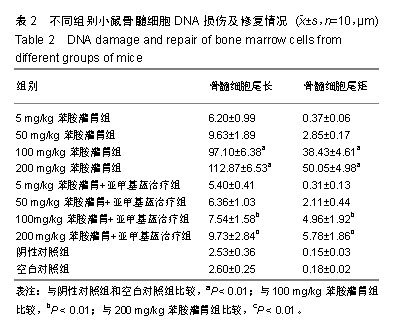| [1]尹博.表面活性剂对含氮芳香烃的增溶作用研究[D].广州:广东工业大学,2017.[2]张晓春,吴登胜,杨强生,等.低浓度苯胺、硝基苯对生产工人健康的影响[J].中国工业医学杂志,2001,14(1):53-54.[3]Wang J, Wang G, Khan MF. Disorder of G2-M checkpoint control in aniline-induced cell proliferation in rat spleen. PLoS One. 2015;10(7):e0131457.[4]Patnaik S, Natarajan MM, James EJ, et al. Methylene blue unresponsive methemoglobinemia. Indian J Crit Care Med. 2014;18(4):253-255.[5]Bazylewicz A, K?opotowski T, Kicka M, et al.Acute poisoning due to chemical substances inducing methemoglobinemia-- two cases report. Przegl Lek. 2010;67(8):636-639.[6]Clifton J 2nd, Leikin JB. Methylene blue. Am J Ther. 2003; 10(4):289-291.[7]黄继汉,黄晓晖,陈志扬,等.药理试验中动物间和动物与人体间的等效剂量换算[J].中国临床药理学与治疗学,2004,9(9): 1069-1072.[8]蔡继翔,刘烨,梁明才,等.单细胞凝胶电泳应用研究进展[J].生物信息学,2016,14(2):95-99.[9]徐丽娟,赵欣欣,奚铭远,等.血浆置换联合亚甲蓝救治重度急性苯胺中毒1例[J].中国输血杂志,2018,31(1):74-75.[10]刘雪兰,徐少博,吕月,等.苯胺经皮肤中毒致急性重度肝损害1例[J].浙江实用医学, 2018,23(5):373-374.[11]蒋伟,朱洪坤,清江.苯胺对小鼠成纤维细胞L929的体外毒性评价[J].生态毒理学报,2018,13(5):256-261.[12]温广军.苯胺对浮萍营养生长和部分生理指标的毒性效应[D].扬州:扬州大学,2012.[13]刘申吒.EGCG对人食管鳞癌TE-1细胞放疗增敏的作用及其机制研究[D].镇江:江苏大学,2016.[14]赵晓红,牛静萍,李兴玉,等.苯胺类化合物的遗传毒性及其定量构效关系[J].毒理学杂志,2000,14(4):218-220.[15]Harrison JH, Jollow DJ. Contribution of aniline metabolites to aniline-induced methemoglobinemia. Mol Pharmacol. 1987; 32(3):423-431.[16]支绍册,金箫,李冬,等.急性间二硝基苯中毒9例诊治分析[J].全科医学临床与教育,2015,13(4):453-455.[17]边高鹏,刘瑞祥,史宝忠,等.苯胺致小鼠肝细胞和淋巴细胞DNA损伤及其修复效应[J].中国实验动物学报,2016,24(2):139-144.[18]Makhdoumi P, Hossini H, Ashraf GM, et al. Molecular mechanism of aniline induced spleen toxicity and neuron toxicity in experimental rat exposure: a review. Curr Neuropharmacol. 2019;17(3):201-213.[19]Ma H, Wang J, Abdel-Rahman SZ, et al. Induction of NEIL1 and NEIL2 DNA glycosylases in aniline-induced splenic toxicity. Toxicol Appl Pharmacol. 2011;15(1):1-7.[20]黄伟英,陈鸿汉,刘菲.低浓度下4个取代苯污染物与硝酸铅的混合对发光菌的联合毒性[J].生态环境学报,2010,19(1):57-62.[21]Bomhard EM. High-dose clastogenic activity of aniline in the rat bone marrow and its relationship to the carcinogenicity in the spleen of rats. Genotoxicity. 2003;77(5):291-297.[22]Jones E, Fox V. Lack of clastogenic activity of aniline hydrochloride in the mouse bone marrow. Mutagenesis. 2003;18(3):283-286.[23]郝凤桐.特效解毒剂的临床应用[J].职业卫生与应急救援,2017, 35(1):25.[24]贝怀国.实验性大鼠亚硝酸盐中毒与治疗实验[J].上海畜牧兽医通讯,2015,(5):8-10.[25]姚燕红,叶洋鹰.18例亚甲蓝配伍维生素C抢救亚硝酸钠中毒患者的护理[J].当代护士,2015,22(5):33-34.[26]Juffermans NP, Vervloet MG, Daemen-Gubbels CR, et al. Adose-finding study ofmethylene blue to inhibit nitric oxide actions in the hemodynamics of human septic shock.Nitric Oxide. 2010;22(4):275-280.[27]梁楠,胡鲲,杨先乐.亚甲基蓝代谢及生物毒性研究概况[J].渔业致富指南,2016,(10):17-19.[28]陈万光,屈菊平,周芬娜.亚甲基蓝对高体鳑鮍鱼苗的急性毒性研究[J].广东农业科学,2010,(5):131-132.[29]邹志兵.低氧训练时心肌组织细胞低氧诱导因子1α与凋亡相关蛋白的表达[J].中国组织工程研究,2015,19(51):8305-8310.[30]蓝志明.CCK-8法定量检测亚甲蓝对人髓核细胞的毒性[J].中国组织工程研究,2018,22(16):2532-2536. |



